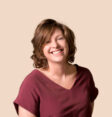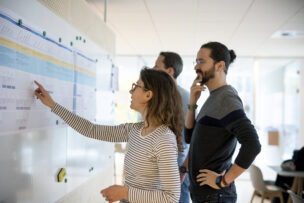To improve the customer experience, you need to know what the actual experience looks like. Not by making assumptions, but by putting yourself in the shoes of your customer’s – almost literally. You’ll have to look at the product, service or digital experience through the eyes of your customers. So you do customer research to discover customer needs.
so, what is customer research?
Customer research is the collection and analysis of information about your customers; customer insights. This might sound pretty straightforward, but customer research comes in many forms and nuances. Because only if you really understand the needs, motivations, context and behavior of your customers, you can improve their experience.
Now that many organizations are adopting lean and agile working methods, the definition and interpretation of customer research is evolving. Nowadays, there is more and more interaction and constant dialogue with the customer during the design process, and even afterwards.
Customer research is never a goal in itself, it’s a tool. If you, for instance, want to improve or develop a service or optimize an internal process, you can use customer research as a tool to help you determine the next steps.
what are the most commonly used customer research methods?
Depending on your goal, there are various tools, models and methods that you can use to conduct customer research, to structure it and, above all, to make it practical. At Essense we use both qualitative and quantitative research. Below, we’ll list our most commonly used methods.
qualitative research
In qualitative research you’re looking for ideas, opinions, beliefs, motivations, values, dreams, feelings and behavior of people. You can go about this in various ways. The biggest challenge in qualitative research is to be completely unbiased as an interviewer. Certainly if you do customer research within your own organization, it is almost impossible to leave out your own interpretation, opinion or ego.
A tip from Senior Service Designer Anne-Marie van der Weijden: Listen sincerely and create a safe environment where people really dare express themselves. “There are things that people are aware of and that are easy to talk about, but you want to go a little deeper: you want to know the why of certain behavior.”
Below you’l find the five most commonly used qualitative methods for customer research.
- In-depth interviews: conversations, often one-on-one, to map out the user’s experience and ask deeper questions. Often supported with creative templates and tools from generative research.
- Context mapping: Using the user as an expert and guiding him/her in a reflective process through creative sessions, cultural probes and journals to discover latent needs in the context of the product or service.
- Service safari: going through the customer journey of the user yourself and reflecting on it.
- Usability tests: to improve the interaction with your (digital) product or service. You gain insight into how users use your (digital) product live.
- Generative research: letting users map out their latent needs through DIY and craft assignments.
quantitative research
In quantitative research, you collect all kinds of data that you express in numbers. In this case, you are less ‘open’ in your questioning, because you try to confirm or disprove hypotheses and assumptions. The two most commonly used forms of qualitative customer research are:
- A/B tests: comparing two different versions of, for example, a website.
- Surveys: sending out a questionnaire to a specific target group to get ‘hard numbers’. When you repeat surveys regularly, you can discover trends. Consider, for example, the NPS score (customer satisfaction KPI).
how do I put my customer research into practice
Conducting customer research requires time, knowledge and skills. To support you as much as possible, we regularly organize webinars and events in which we help both beginners and experts to take the next step in customer-oriented working. Sign up directly below for our events update. We will then keep you informed about all our webinars and events.
If you prefer a one-on-one with one of our experts or an in-company training, please view the options here, or contact us directly. We’re looking forward to discovering your customers needs and to replace assumptions with real insights. Sounds good?











